Contents
Pluteus atromarginatus (Pluteus atromarginatus)
- Division: Basidiomycota (Basidiomycetes)
- Subdivision: Agaricomycotina (Agaricomycetes)
- Class: Agaricomycetes (Agaricomycetes)
- Subclass: Agaricomycetidae (Agaricomycetes)
- Order: Agaricales (Agaric or Lamellar)
- Family: Pluteaceae (Pluteaceae)
- Genus: Pluteus (Pluteus)
- Type: Pluteus atromarginatus (Pluteus atromarginatus)
:
- Plutey black-edge
- Plutey black-extreme
- Pluteus nigrofloccosus
- Pluteus cervinus var. nigrofloccosus
- Pluteus cervinus var. atromarginatus
- Pluteus tricuspidate
- Pluteus umbrosus ss. Bresadola is a homonym of the umber blubber (Pluteus umbrosus)
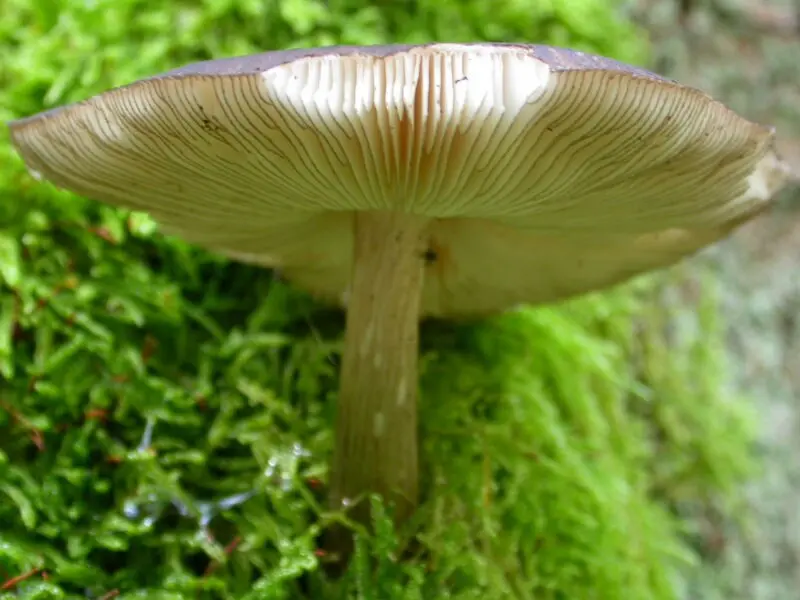
The current name is Pluteus atromarginatus (Konrad) Kühner (1935)
The etymology of the epithet is from atromarginatus, a, um, with a dark edge. From ater, atra, atrum, dark, black, soot colors + margino, avi, atum, are, border, frame.
head 4-10 (12) cm in diameter, in young specimens hemispherical-campanulate, convex or flattened when ripe, often with a gentle, slightly protruding tubercle, the edge is wavy, smooth, without grooves, often radially cracking, forming peculiar lobes.
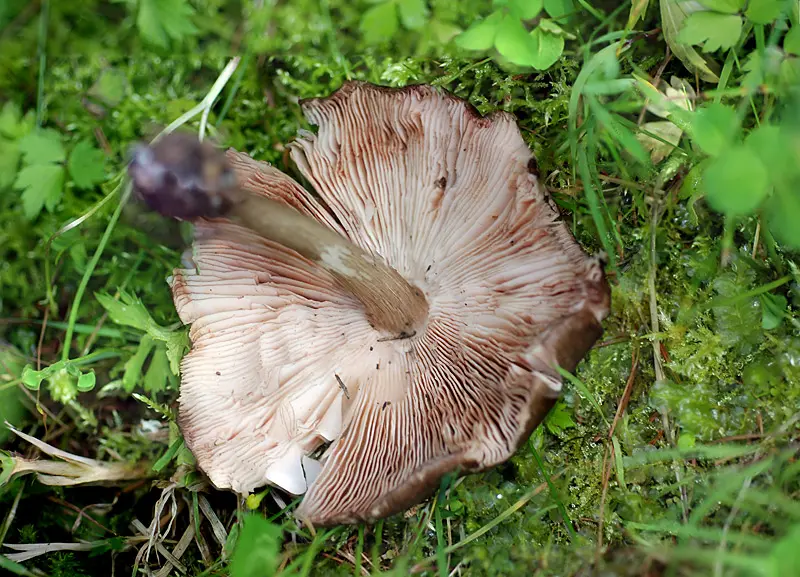
The color is dark brown, sometimes almost blackish, especially in the center of the cap, which is usually darker than the edge. The cuticle (integumentary tissue of the cap, skin) is mucous in wet weather, represented by radial ingrown fibers, and in the center of the cap – by small bristly scales, especially clearly visible in dry weather. The pulp is quite dense, moderately fleshy in the center, thin along the edge. The color of the pulp is marble-whitish, under the cuticle – brownish-gray, does not change on the cut. The smell is pleasant slightly pronounced, the taste is mild, slightly sweet.
Hymenophore mushroom – lamellar. The plates are free, frequent, always interspersed with plates of different lengths, in young mushrooms they are white, cream, salmon, with age they become pink, pink-brown. The border of the plates is almost always painted black-brown.
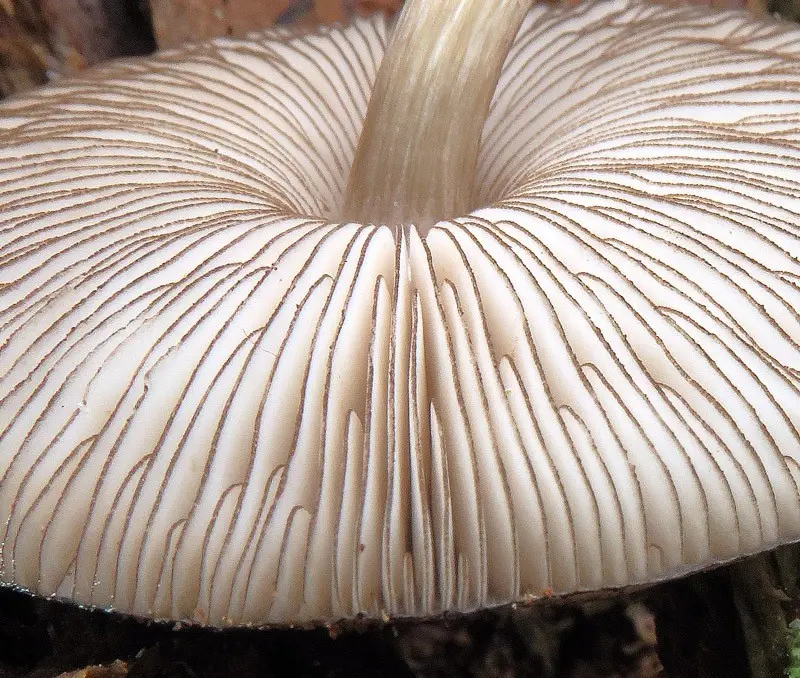
This coloration is clearly visible when looking at the plates from the side, and is even better visible if armed with a magnifying glass.
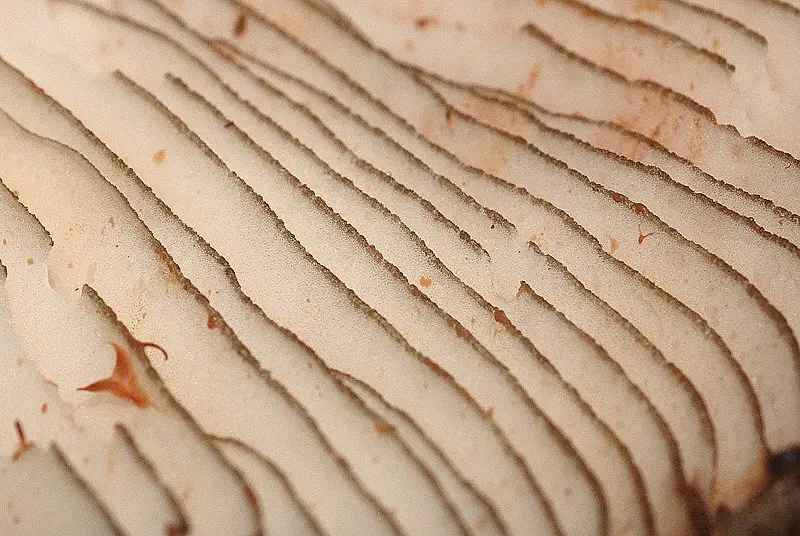
It is this feature that is one of the main distinguishing features of the fungus, and it also gave the name to this type of spit.
spore print pink.
Споры pink (in mass) (5,7) 6,1-7,3 (8,1) × (3,9) 4,2-5,1 (5,4) µm, broadly ellipsoidal, smooth.
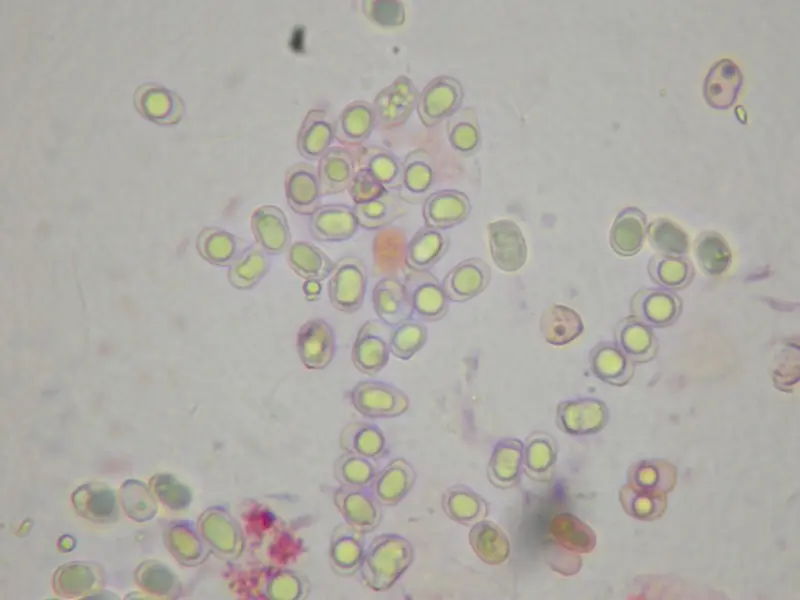
Basidia 20-30 × 6,0-10,0 µm, 4-spore, with long sterigmata 2-3 (4) µm.
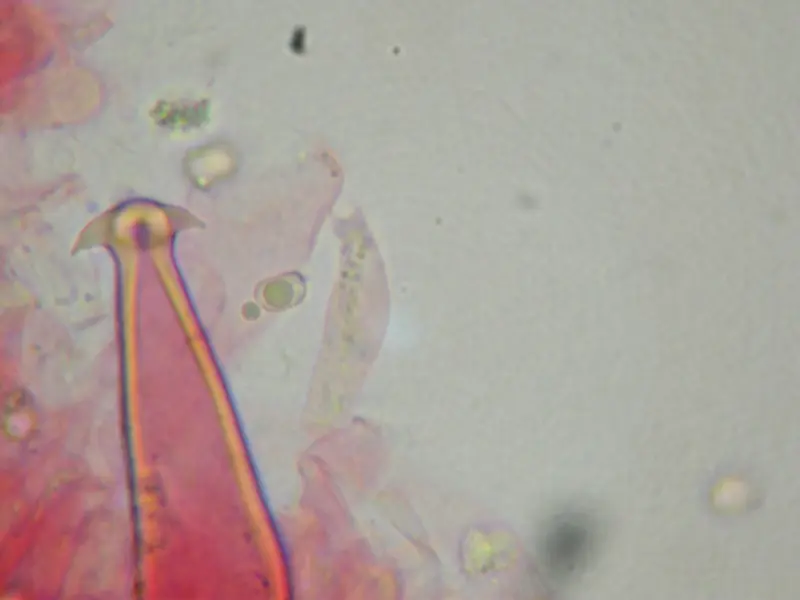
Cheilocystidia are thin-walled with brown pigment, pear-shaped, spherical and ellipsoid. Dimensions (15) 20-45 × 8-20 µm.
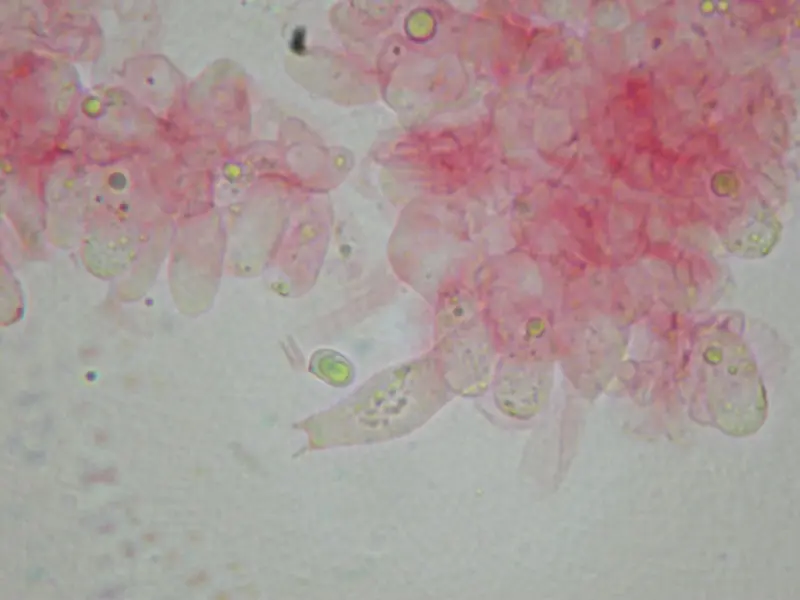 Pleurocystids are fusiform, pear-shaped, spherical, thick-walled, hyaline (at the edge of the plates with brownish-brown contents), with 2–5 uncinate processes at the apex, 60–110 × 15–25 µm
Pleurocystids are fusiform, pear-shaped, spherical, thick-walled, hyaline (at the edge of the plates with brownish-brown contents), with 2–5 uncinate processes at the apex, 60–110 × 15–25 µm
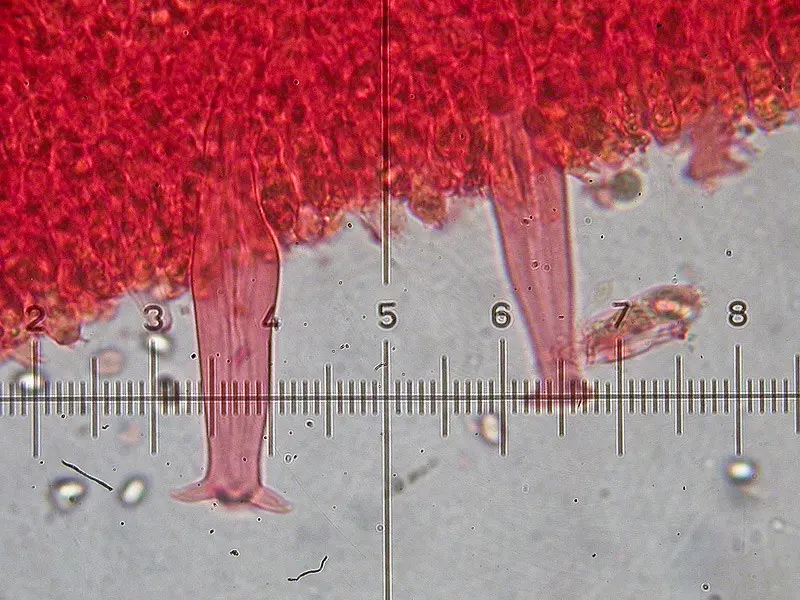 Pileipellis. Hyphae with clasps (characteristic), thin-walled, caps in the cuticle consisting of cells 10–25 μm in diameter with brownish contents, in the cuticle of the stem – from cylindrical hyaline cells 5–15 μm in diameter.
Pileipellis. Hyphae with clasps (characteristic), thin-walled, caps in the cuticle consisting of cells 10–25 μm in diameter with brownish contents, in the cuticle of the stem – from cylindrical hyaline cells 5–15 μm in diameter.

Leg central 4-12 cm long and 0,5-2 cm thick, from cylindrical (thinner at the cap) with a slight thickening towards the base, rarely to club-shaped. The surface is smooth whitish with longitudinal silky brown, dark brown fibers. The flesh is whitish, much denser and more fibrous than that of the cap.
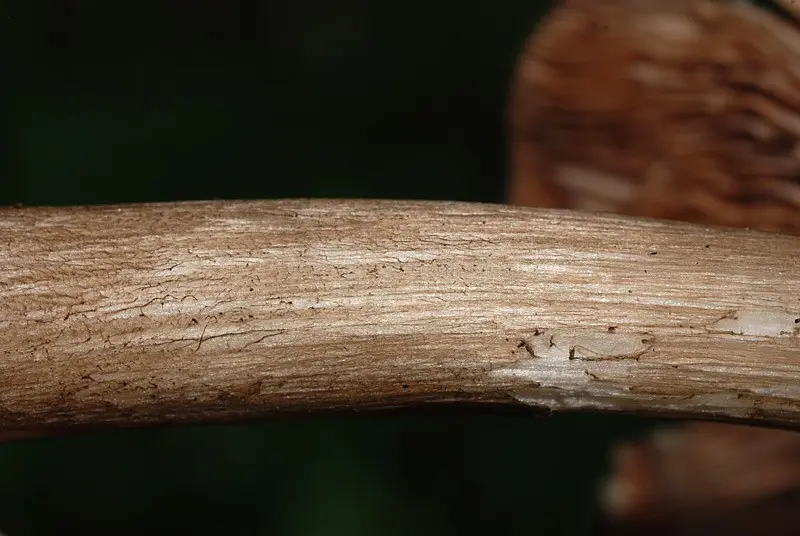
Pluteus atromarginatus is a saprotroph on stumps, dead wood or deadwood of coniferous trees (spruce, pine, fir), buried woody residues, sawdust in coniferous and mixed forests. Grows singly or in small groups from July to October. Distributed in Asia, Europe, Japan, Transcaucasia. In Our Country, finds have been recorded in the Perm and Primorsky Territories, Samara, Leningrad, and Rostov Regions.
Apparently, the mushroom is edible, but due to the rarity, pronounced fibrous stem, it does not represent any culinary value at all.
The definition of this fungus is unlikely to cause difficulties due to the characteristic color of the border (ribs) of the plates, but it can still be confused with some species.
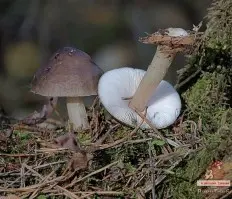
Deer whip (Pluteus cervinus)
It differs in the color of the border of the plates (uniform color over the entire area), in the smell of horseradish (or radish) and in most cases it grows on deciduous trees.
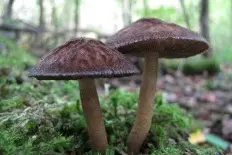
Umber whip (Pluteus umbrosus)
The brownish coloration of the ribs of the plates is also characteristic of the umber blubber (Pluteus umbrosus), but this species differs from P. dark-edge in a completely hairy-scaly hat with a radial-mesh pattern and growth on broad-leaved trees. There are also differences in the structure of pleurocystidia.
Photo: funghiitaliani.it









